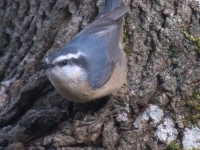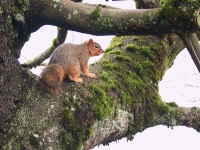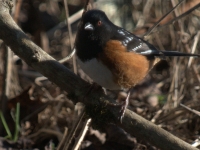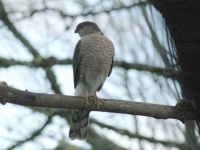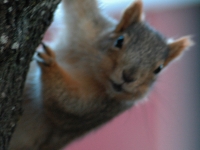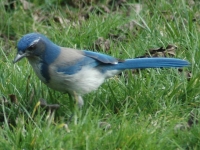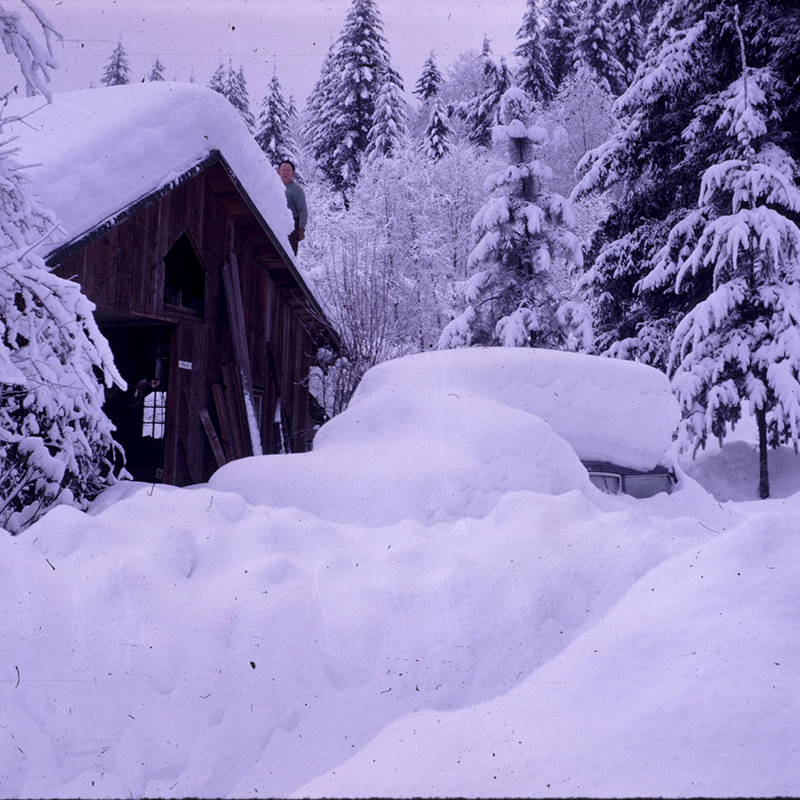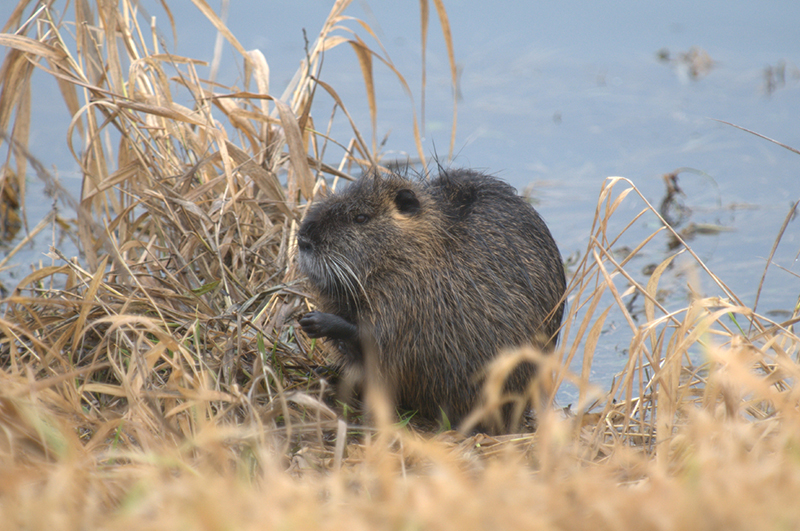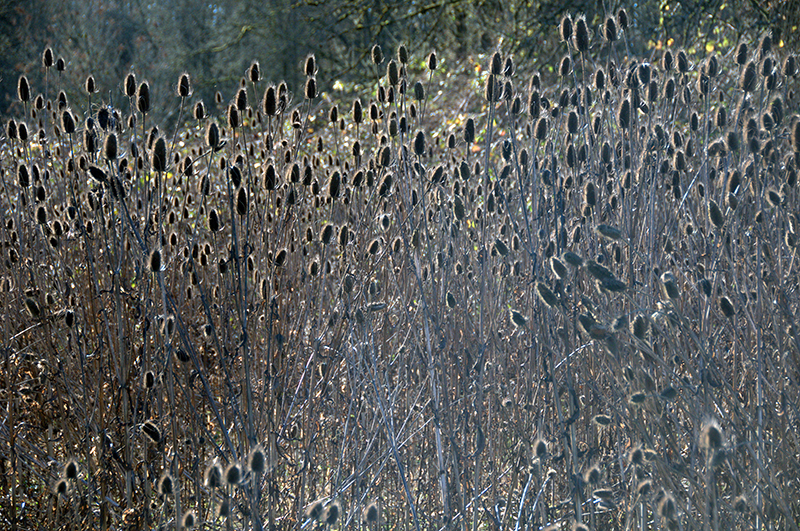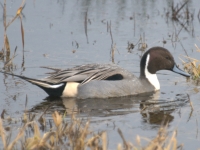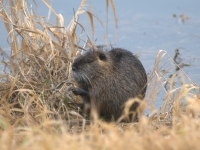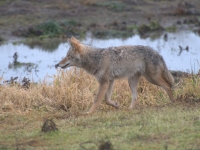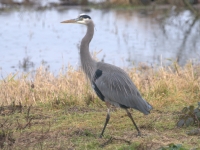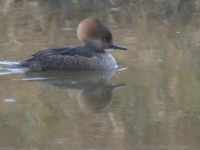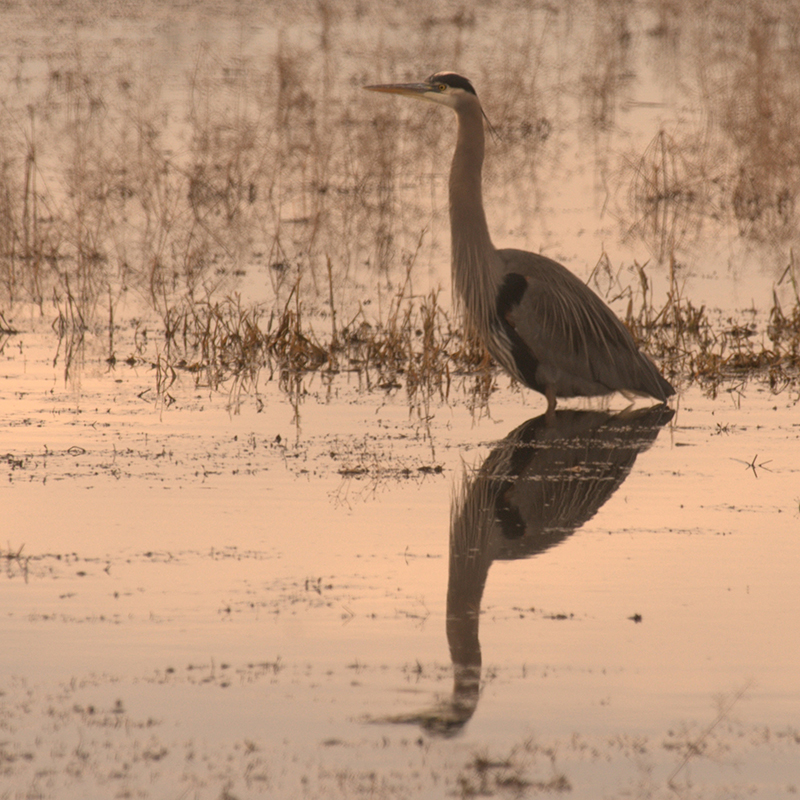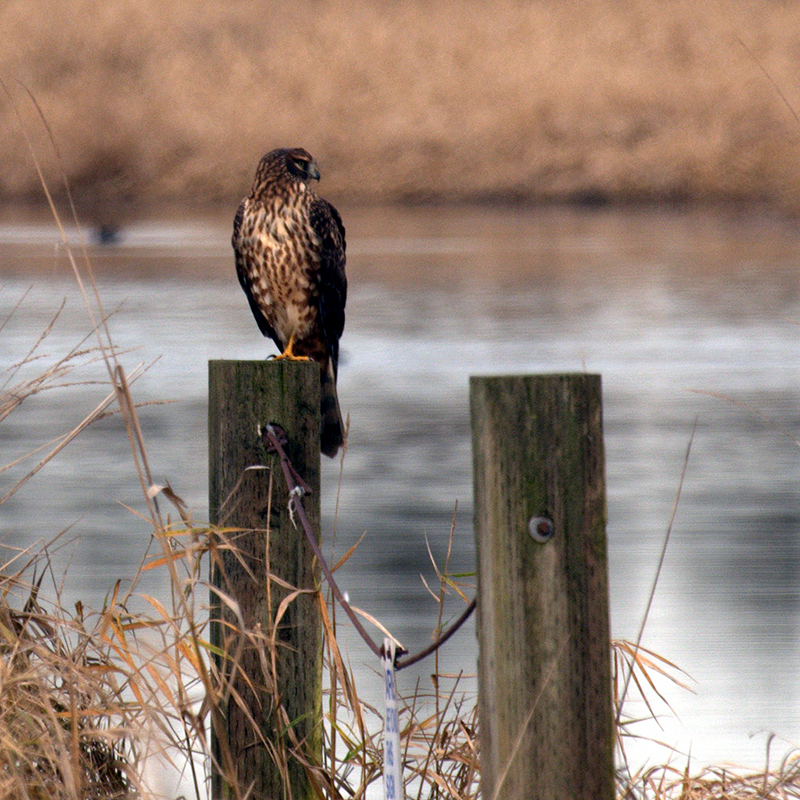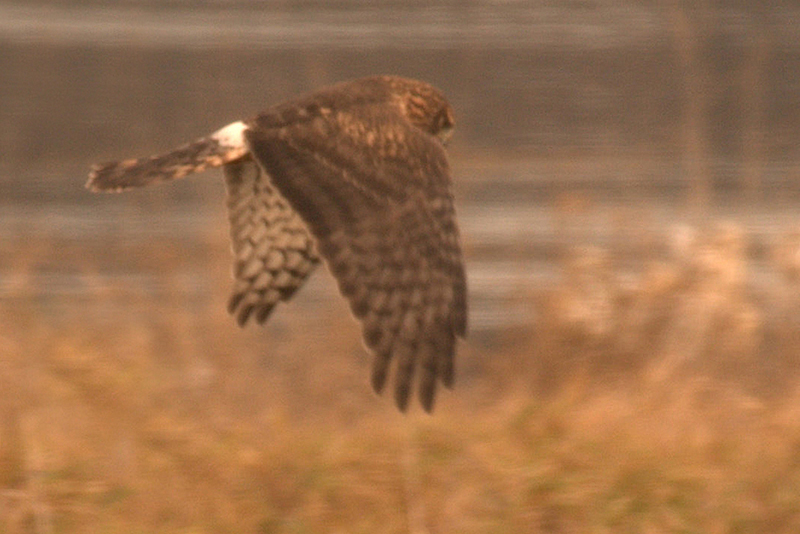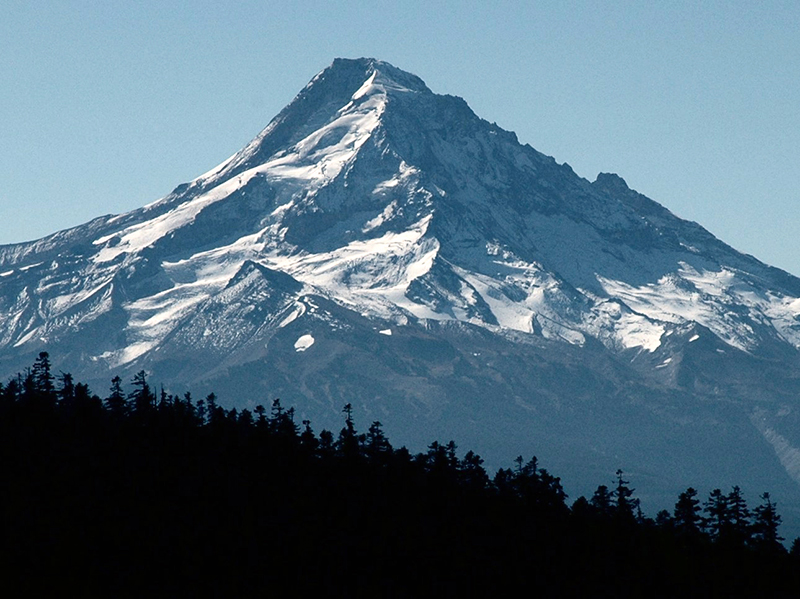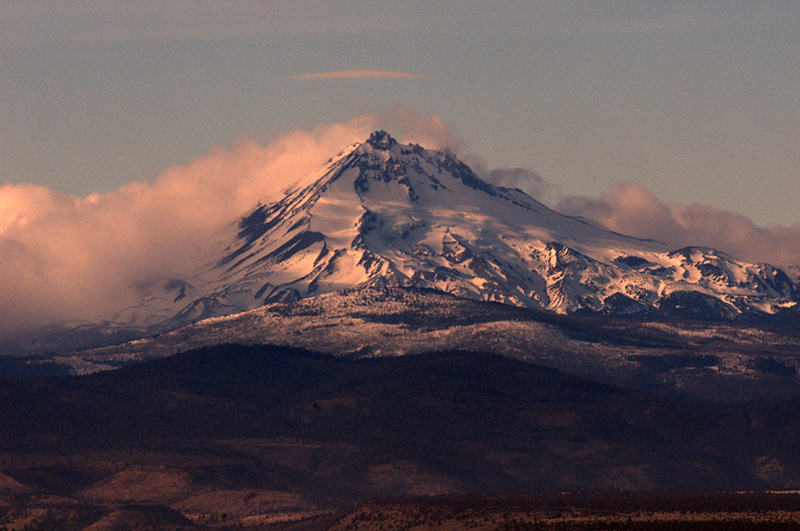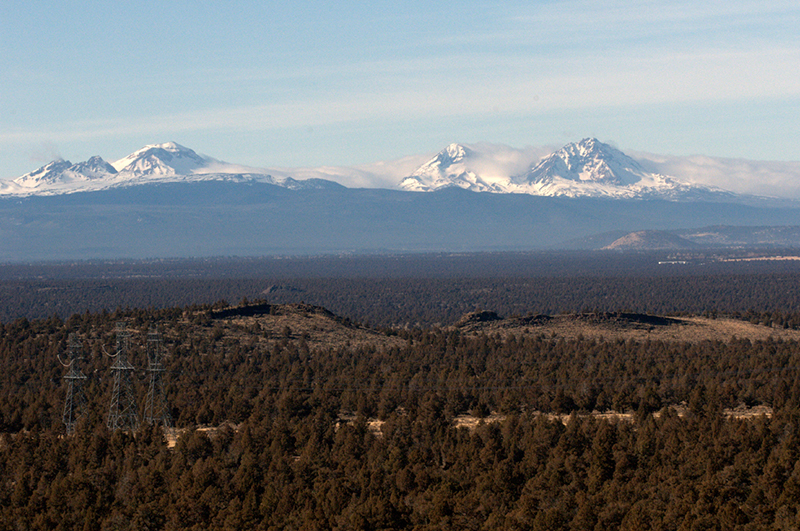Our kitchen window offers a view into a wooded area on the east side of the house. I often stand at the sink and watch birds forage for food. When summer lapses into fall and winter cold threatens starvation the birds begin to look elsewhere for food. Then I hang a feeder and fill it with sunflower seeds. The feeder keeps at least three squirrels fat but they add to the daily activities,
The first birds to come are the chickadees but soon many other species join the feeding frenzy. Even ground foragers arrive and scratch in the leaves for whatever it is they are seeking. Once in a while I think I hear the shrill cry of a hawk and a larger bird will swoop into the gathering, scattering the smaller birds. It is just a silly jay, who mimics the hawk to bully the smaller birds. The jay will empty the feeder, apparently in a fit of anger, spilling all the seeds upon the ground, perhaps to the benefit of the ground foragers.
On rare occasion a “real” hawk will fly in searching for a meal.
The neighbor’s cat will also lurk around the feeder. If I see it I will chase it away but I have yet to observe it catch a bird. Their warning radar seems to work pretty well.
A couple days ago I saw a varied thrush scratching in the leaves. They usually show up when the weather is the coldest, when the puddles are iced over and snow is on the ground. Try as I might I can’t get a good photograph of one. They are very shy.
byLarry


